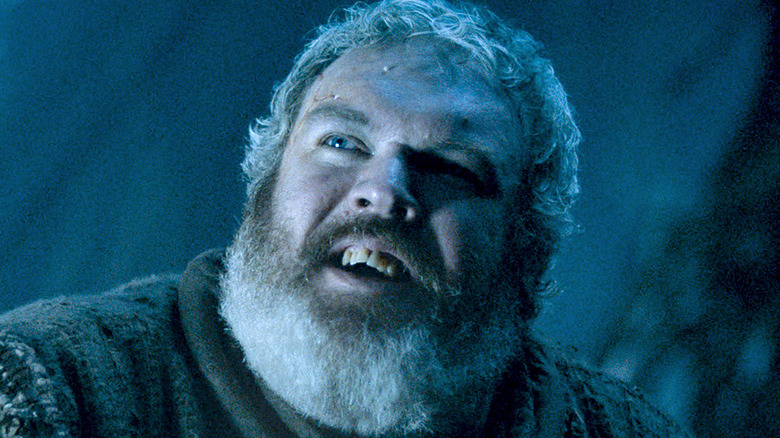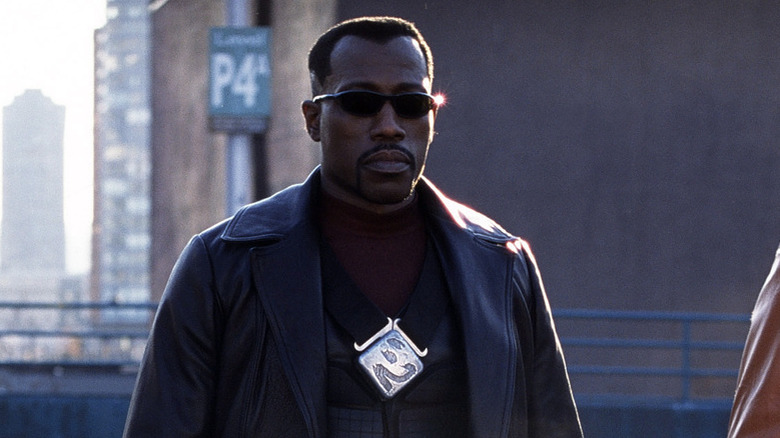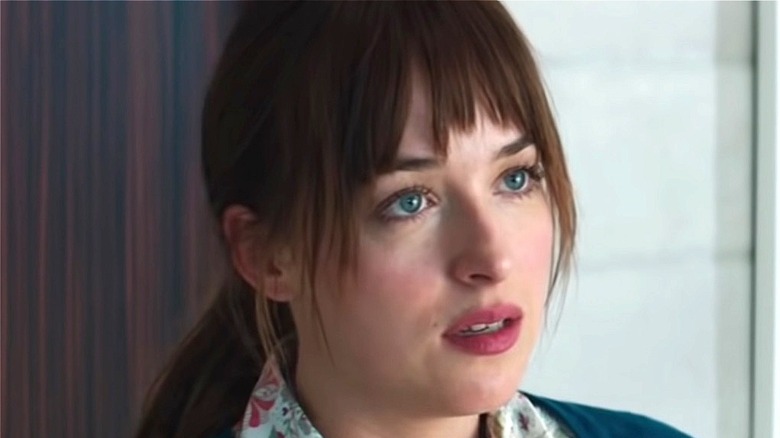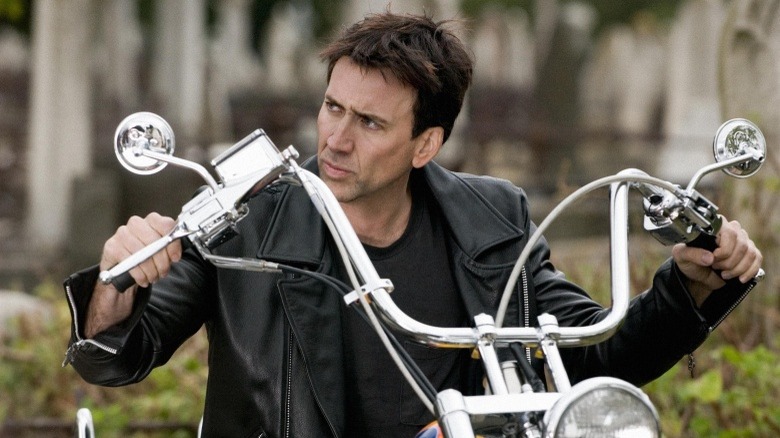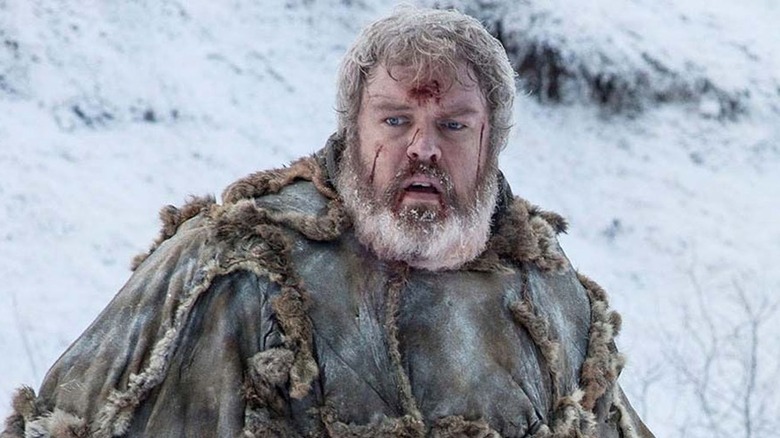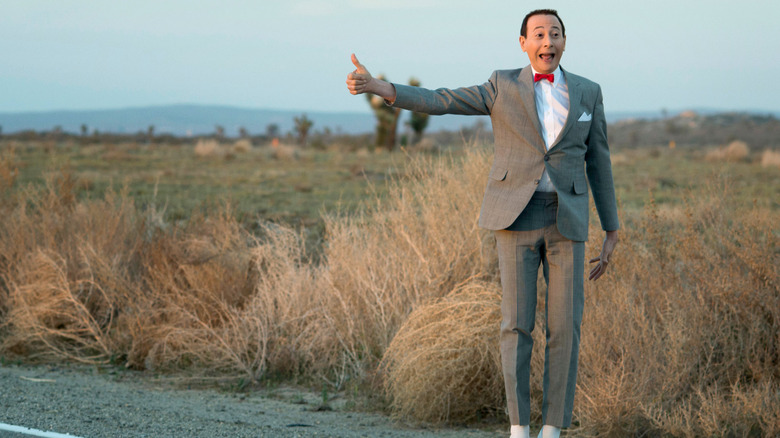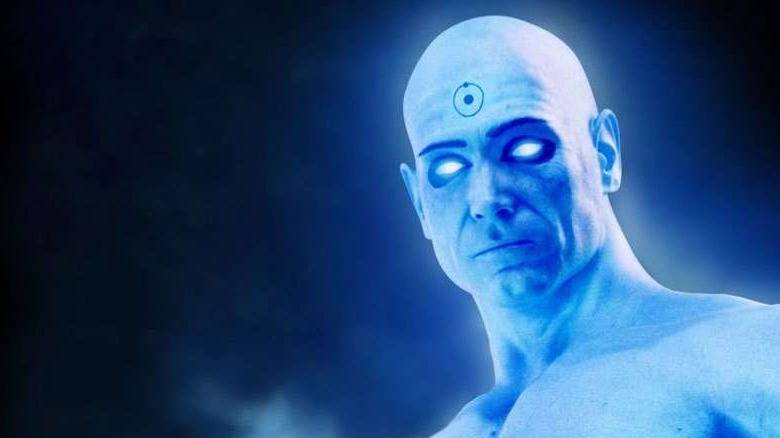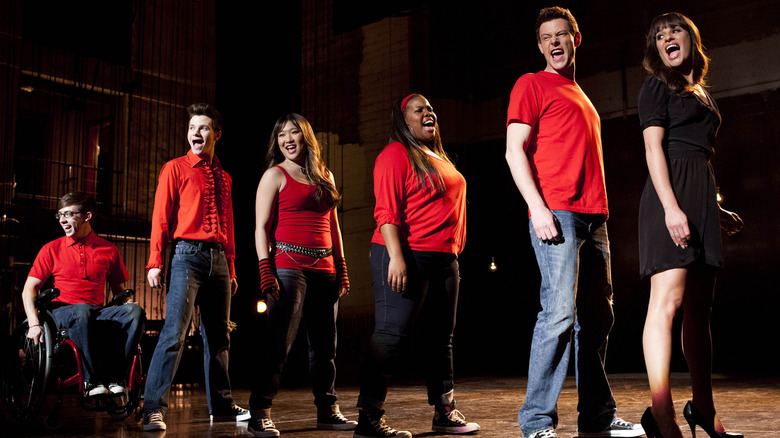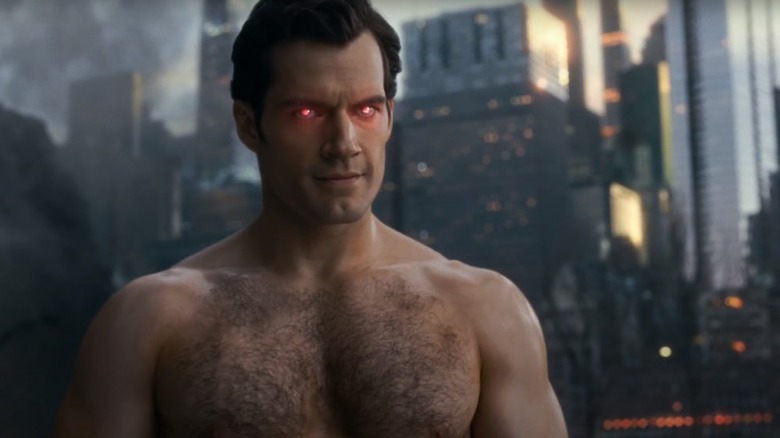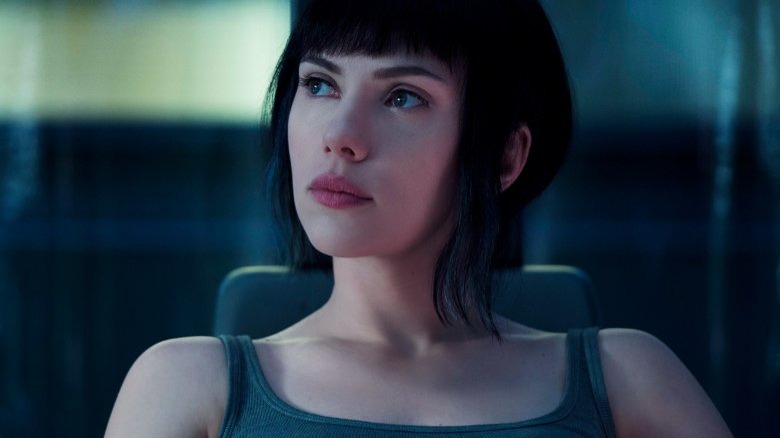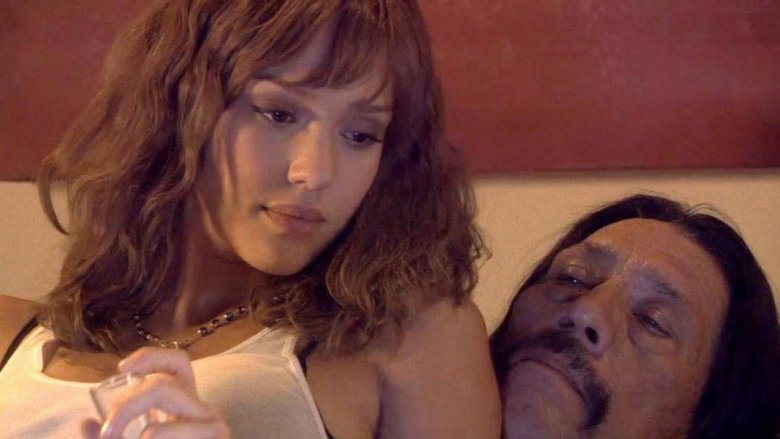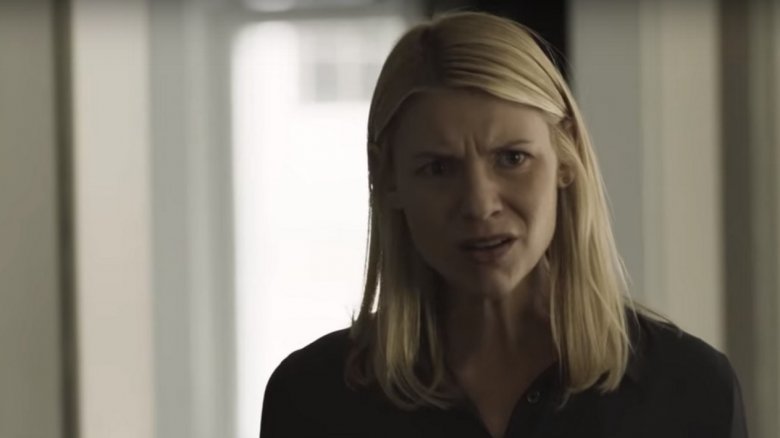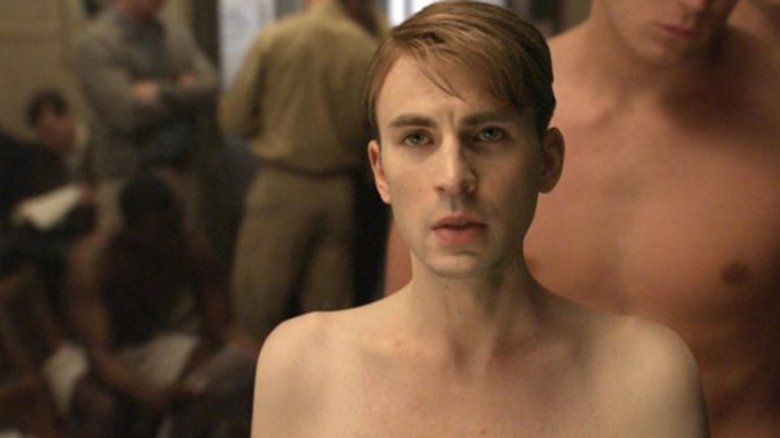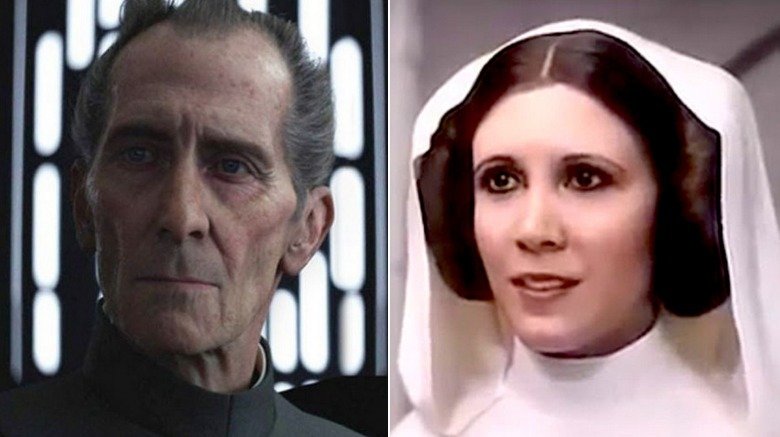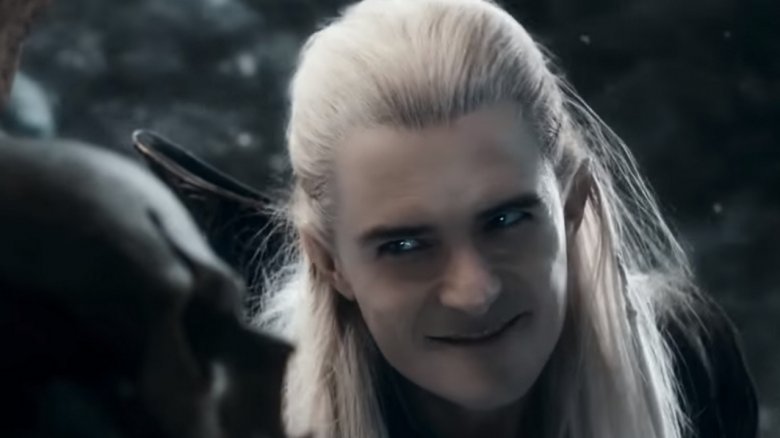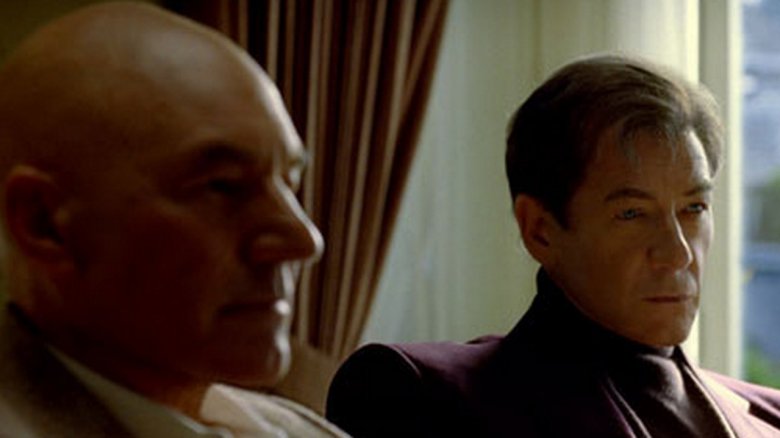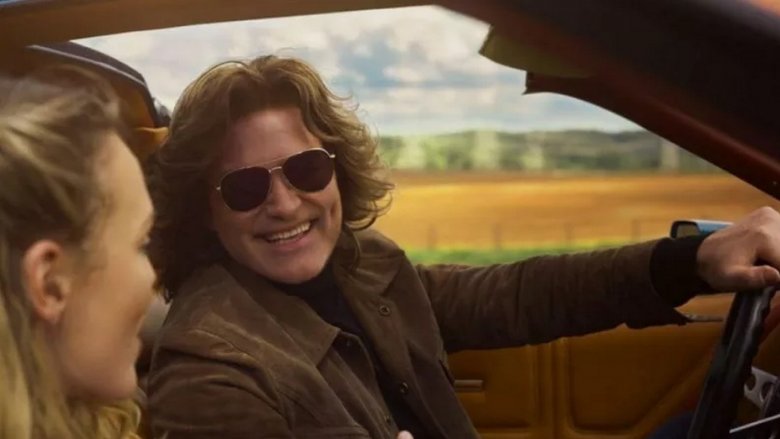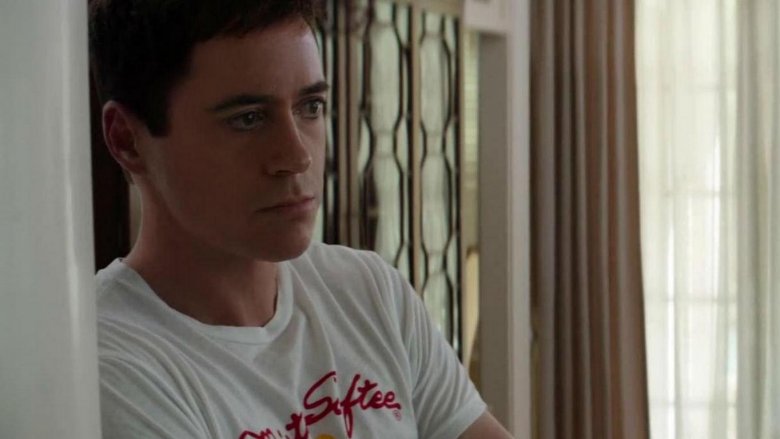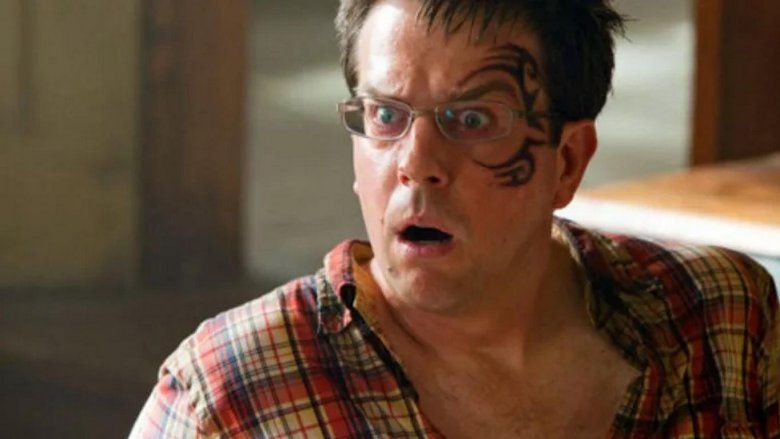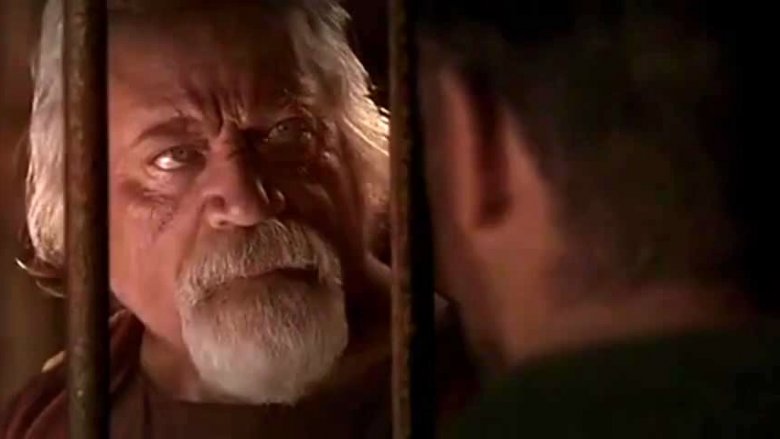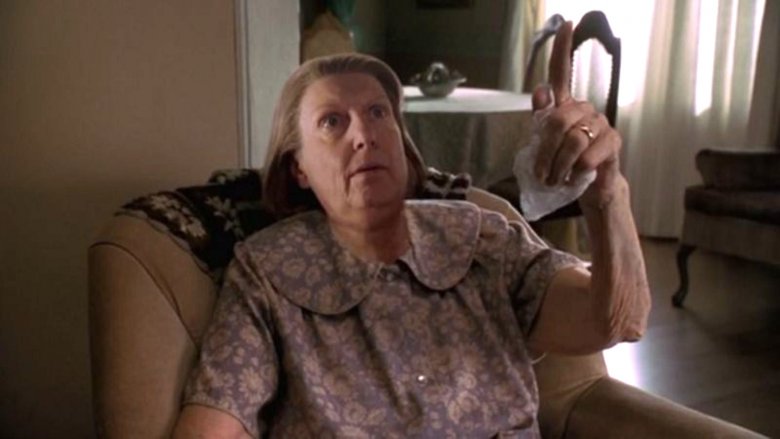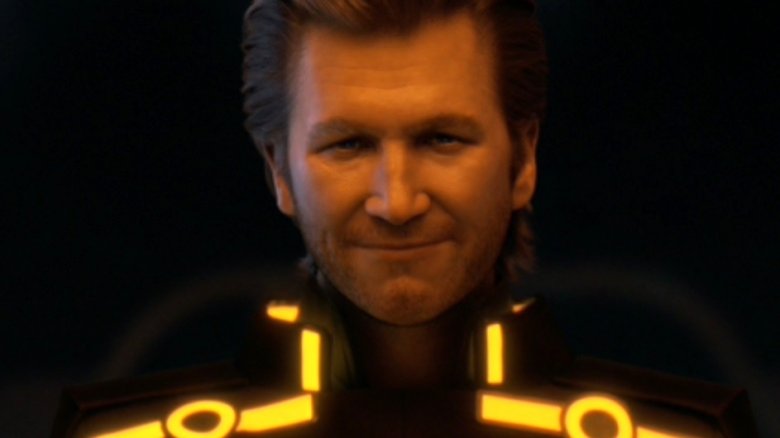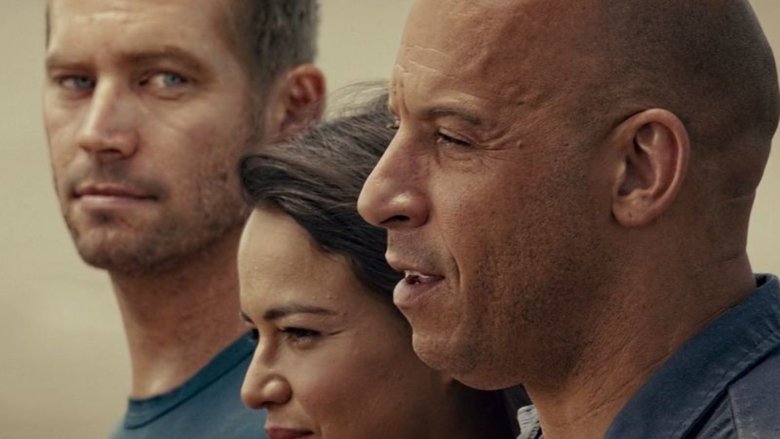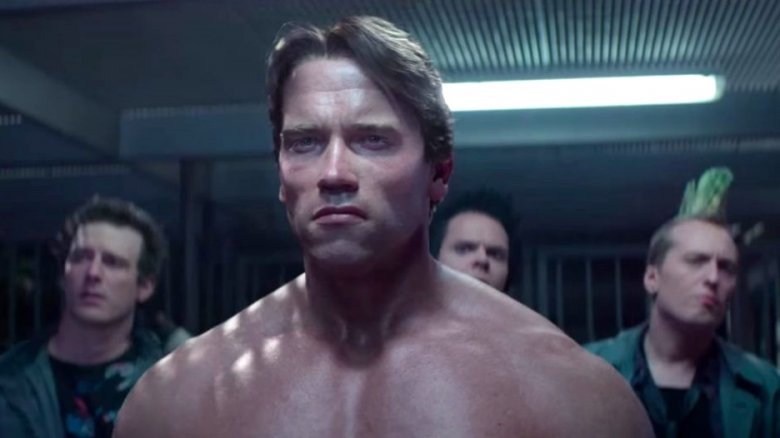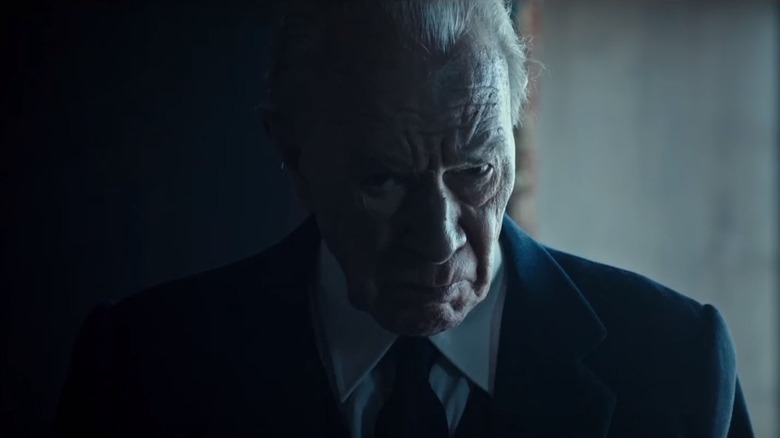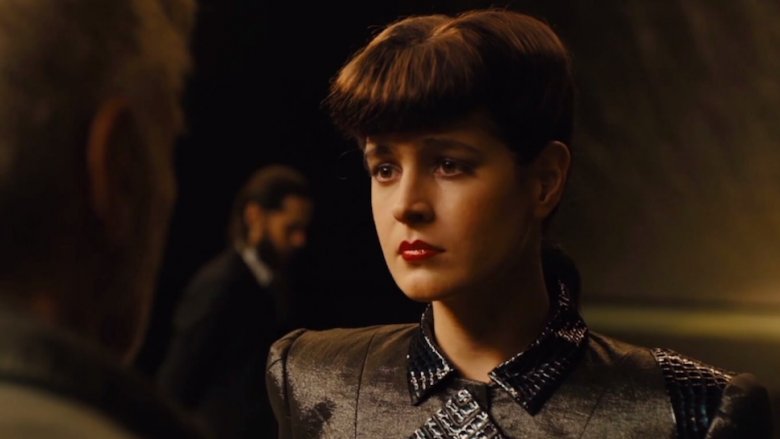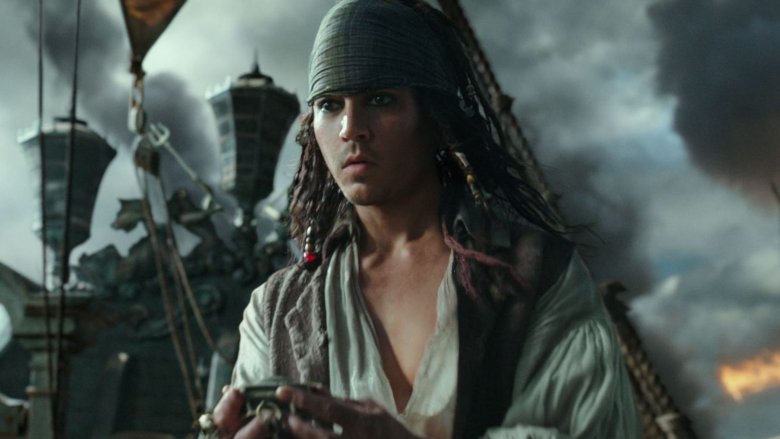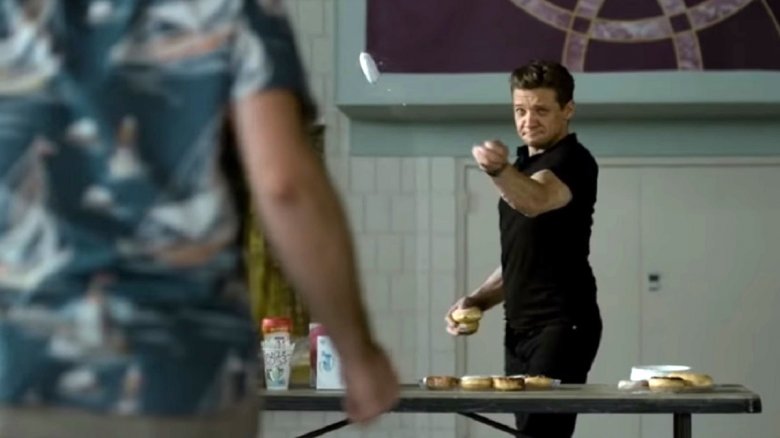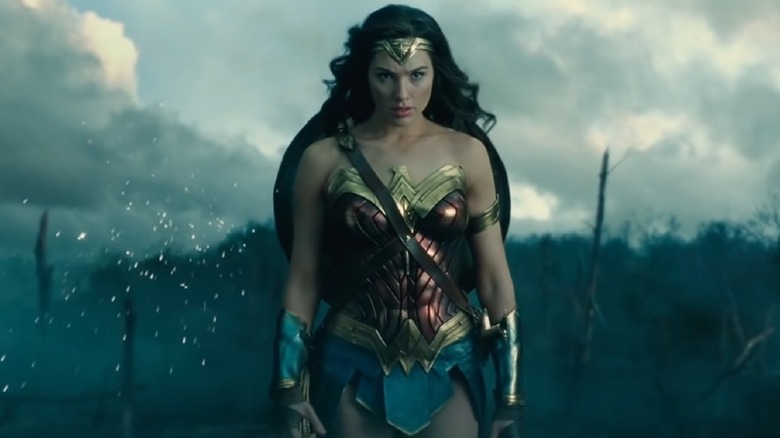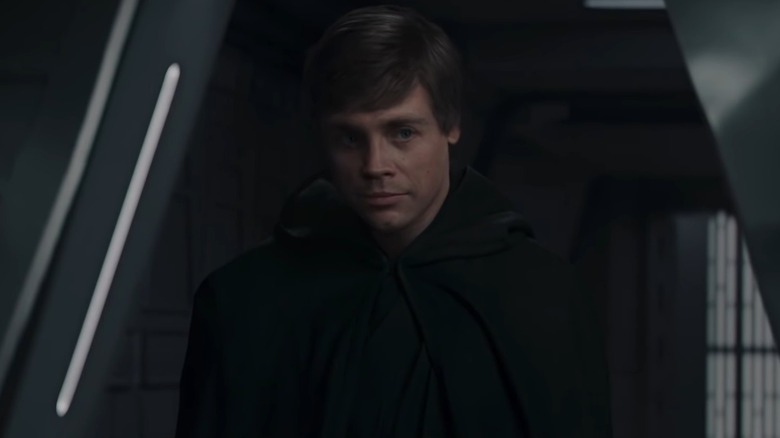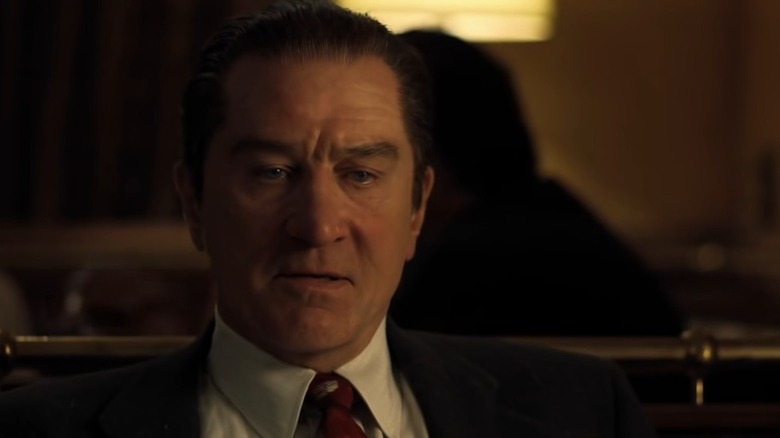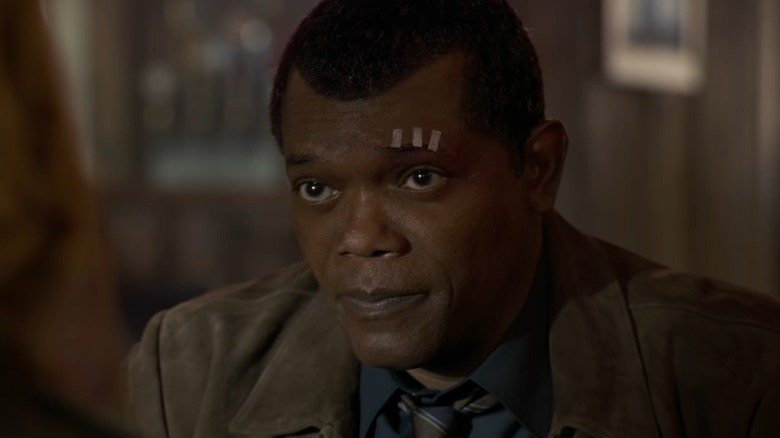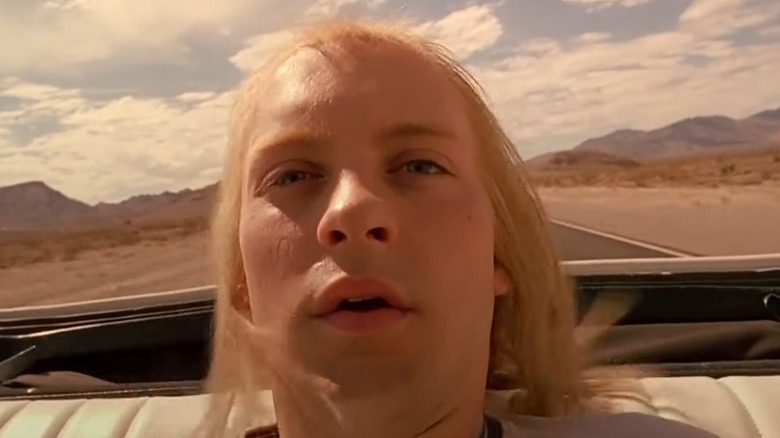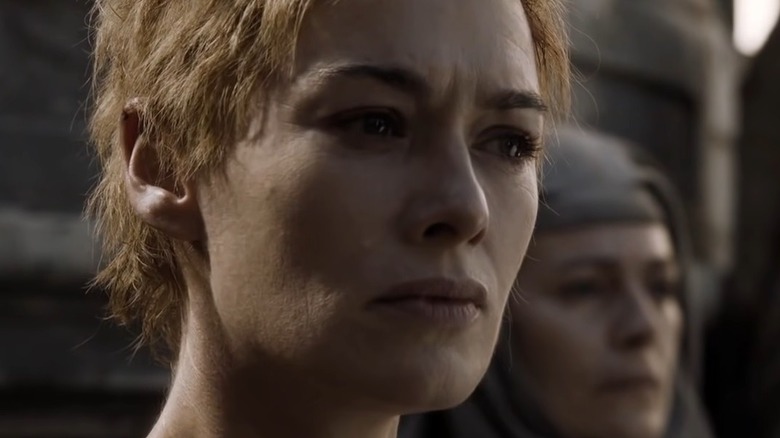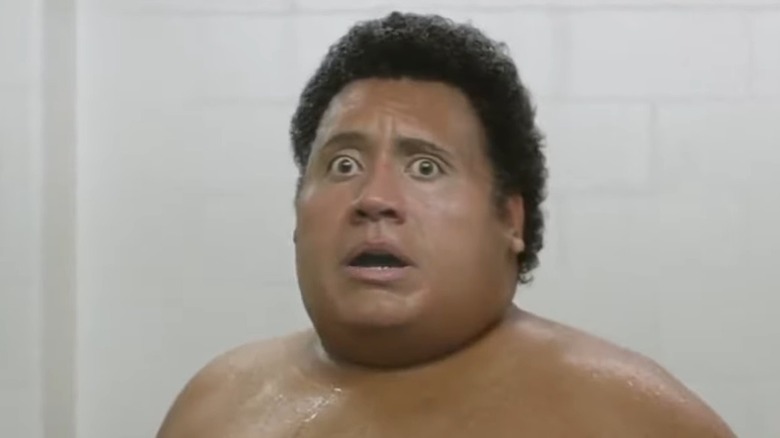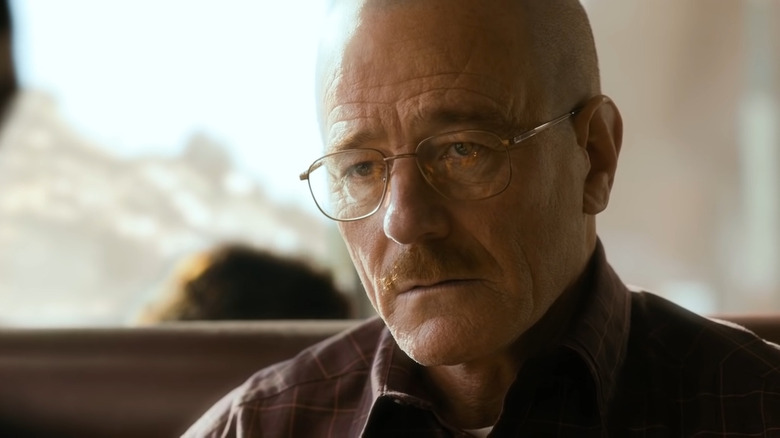Actors Who Needed To Be Digitally Edited
Filmmakers today can bring just about anything realistically to life using state of the art digital effects. Whether it's exploding space stations or giant transforming robots, if you can imagine it — and spare a couple hundred million to fund it — the movie industry can put it up on the big screen.
But even though it's great for bringing the most fantastical creations convincingly to theaters, this technology can also be used for decidedly more mundane purposes — like making an actor's body parts look bigger or erasing embarrassing tattoos so they don't appear in topless scenes. Between all the obviously spectacular computer-derived spectacle, the movie industry's top effects animators are often hard at work adding and subtracting elements that, although they may never be noticed by most filmgoers, can be just as important to the final product. Here's a look at some actors whose real-life features had to be digitally altered for the movies.
Wesley Snipes, Blade: Trinity
Blade: Trinity was nearly derailed by a feud between actor Wesley Snipes and director David S. Goyer. According to Patton Oswalt, who had a role in the film, Snipes and Goyer would frequently have heated arguments—and Snipes even attempted to strangle Goyer. This eventually resulted in Snipes only communicating via Post-It notes left around the set, all of which he helpfully and adorably signed "From Blade."
Goyer, not wanting to deal with Snipes, attempted to film as many of his scenes as possible using stand-ins. Snipes responded to this slight by intentionally ruining scenes. The most hilarious example occurred when Goyer asked Snipes to open his eyes for a dramatic shot of him waking up in the film's climax, and Snipes absolutely refused. Rather than pressing Snipes to do his job, Goyer simply had the effects department CGI some eyes onto Snipes' uncooperative face.
Dakota Johnson, Fifty Shades of Grey
Whenever you see a nude scene in a movie, there's a good chance that nobody on set ever really got naked. Often, actors wear flesh-colored underwear, and for most movies this is enough, because sex scenes don't really factor into the plot. Not true for the film adaptation of Fifty Shades of Grey. The sex scenes are the plot, which posed a unique problem for the effects department.
Specifically because it showed more skin than most other films do, a decision needed to be made about whether or not Dakota Johnson's character, Anastasia Steele, had a personal grooming routine. Apparently she didn't, because a digital effects artist had to go in during post-production and use CGI to give Johnson a tasteful tuft of pubic hair after using digital effects to remove the flesh-colored covering protecting her dignity. Cinematographer, Seamus McGarvey would later refer to this as one of the most surreal moments of his entire career—closely followed by overseeing the hiring process of a suitable butt double for Johnson.
Nicolas Cage, Ghost Rider
Nicolas Cage loves him some comic books. His son Kal-El is named after Superman, he changed his own last name early in his career from Coppola to Cage as a nod to the Marvel character Luke Cage, and he even has a large tattoo of the Ghost Rider on his arm. This latter tribute proved to be a problem when Cage was set to star in the 2007 Ghost Rider film, because, well, it would have been kind of weird for Johnny Blaze to have a tattoo of his own superhero alter ego on his bicep.
So the decision was made to use "the magic of special effects" to hide the offending tattoo whenever Cage needed to take off his shirt. A persistent rumor surrounding the movie suggests that Cage's abs were also created using the magic of CGI; however, his Ghost Rider co-star Eva Mendes has confirmed that they were, in fact, 100 percent real.
Kristian Nairn, Game of Thrones
There's a scene in the first season of Game of Thrones when the character Hodor, played by actor Kristian Nairn, gets naked—revealing the giant character's suitably plus-sized penis. To achieve the illusion, Nairn was asked to wear a realistic-looking 16-inch prosthetic that was attached to his groin using glue. The effects department then blended the whole thing to his own body using digital effects, airbrushing out a special thong Nairn was wearing beneath the whole get-up. According to Nairn, this thong shielded his actual penis from view so well that one of his co-stars let out an audible gasp when she saw the giant prosthetic for the first time and asked if it was real. Nairn's response? "Luckily, no."
The actor also noted that the effects department made two different prosthetic penises and he got to pick which one to wear based on how well he felt it suited him. Knowing this, you have to assume that Nairn's response was to silently point to the larger fake penis and nod slowly.
Paul Reubens, Pee-Wee's Big Holiday
If you happened to catch Pee-Wee's Big Holiday on Netflix, you may have noticed that actor Paul Reubens looked surprisingly spry and youthful for a 60-something-year-old man. To give the impression that Reubens hadn't aged since his last TV appearance as the character, CGI provided by Vitality Visual FX was used in tandem with make-up, lighting and sticky tape to de-age the actor. That last part isn't a joke, by the way—they literally used tape to pull back Reubens' face for some scenes to make his skin look smoother. Sometimes, the simplest solutions are the best ones.
Reubens, to his credit, was surprisingly open about the use of CGI to remove his wrinkles, admitting that Pee-Wee simply wouldn't work "with age mixed into it" and quipping, "I could have had a facelift and we would have saved two million dollars."
Billy Crudup, Watchmen
The character Dr. Manhattan from Watchmen was physically portrayed by actor Billy Crudup and fitness model Greg Plitt, with the former providing Manhattan's face and the latter his Adonis-like physique. What isn't clear, however, is which man served as the basis for Manhattan's glowing blue radioactive penis.
According to Crudup, he filmed a lot of his scenes in the nude, so—as he put it—"if you see anything, it was totally me." This is somewhat at odds with the fact that we know the basis of Manhattan's physique was provided by another actor—and a statement made by director Zack Snyder, who sheepishly admitted that his team adjusted the size of Dr Manhattan's member in post-production to make it fittingly large for a being who could extinguish all of reality. That's a lot of work for genitalia, but Snyder felt the penis was so important to the movie that he added more shots to the director's cut.
The cast of Glee
The hit musical dramedy Glee continued the longstanding Hollywood tradition of hiring older actors to play teenagers—and although none of the actors playing high schoolers on the show were the age they were supposed to be, they still apparently suffered from a fairly common affliction that plagues all young people: acne.
This didn't sit well with the producers, who paid an unnamed visual effects company to do what was dubbed "a pimple pass" on most episodes to ensure every actor's skin was blemish-free. Because if there's anything that's going to make a show relatable to young people, it's flawless-looking actors with perfect skin complaining about being unattractive.
Henry Cavill, Justice League
The team behind Justice League ended up using the same technology used to create King Kong, Godzilla, and Optimus Prime to remove a mustache from Henry Cavill's face—something that could have just as easily been accomplished with a five-dollar razor from a gas station, if it weren't for the fact that Cavill was contractually obligated to not shave it off until filming for the next Mission: Impossible movie wrapped.
Because of this scheduling snafu, when director Joss Whedon was brought on by DC and Warner Bros to take over the movie for a sidelined Zack Snyder in June of 2017, he found himself in an awkward situation for reshoots. Because the reshoots couldn't really be postponed, Warners told Whedon to film the scenes anyway, and use CGI to remove the facial hair in post-production.
Scarlett Johansson, Ghost in the Shell
The live-action Ghost in the Shell adaptation caused quite a stir when it was revealed that Scarlett Johansson would be portraying protagonist Motoko Kusanagi—a character who's Japanese in the source material.
Although some Japanese fans and the director of the 1995 anime adaptation saw no problem with Johansson's casting, it still drew accusations of whitewashing—something the filmmakers made worse when it was revealed that they'd toyed with the idea of making actors look more Asian by using CGI to "shift [their] ethnicity." They might have caused less controversy if they'd just said they were going to give Johansson buckteeth and ask her to talk like Mr. Yunioshi in Breakfast at Tiffany's.
After word leaked, a statement was quickly issued stating that even though they absolutely did toy with the idea of using CGI to make a character look more Asian, they never went ahead with it. It's nice that more sensible heads eventually prevailed, but still—that's pretty bad.
Jessica Alba, Machete
Jessica Alba resolved long ago to not take off her clothes for a movie. "I can act sexy and wear sexy clothes, but I can't go naked," she told Scarlet magazine in 2010. She talked about how the notion went against her Catholic upbringing. "My grandmother would freak out and throw a towel over me if she saw me wearing just a bra and panties...I can handle being sexy with clothes on but not with them off."
Anyone who watched 2010's Machete after reading the article in Scarlet was likely surprised when Alba appeared to be nude during a shower scene — key word "appeared": In reality, Alba was clothed, her garments digitally replaced in post-production with computer-generated skin.
When news of the digital trickery broke, it sparked a debate about whether using digital nudity hurt a film's integrity. Producer Germain Lussier was one of the loudest voices questioning the practice, noting, "There's a huge difference between acting naked and just being naked."
Claire Danes, Homeland
When a regular for a hit show gets pregnant, sometimes creators write the pregnancy into the story. But when Claire Danes announced she was expecting her first child in 2012, she assured fans her Homeland character Carrie Mathison would remain "fervently non-pregnant" for the second season.
Danes' work continued as late as six weeks before she gave birth. Her baby bump was digitally erased post-production, and body doubles were also used to help with the subterfuge. It wouldn't be the last time Homeland used these strategies to keep a pregnancy out of the story — the following year, they used similar techniques on Morena Baccarin.
Danes' pregnancy certainly didn't make things any easier for her. During a roundtable organized by The Hollywood Reporter, she said, "At one point we were shooting in an old sewage factory. I was kidnapped, I was chained to a pipe, it was 4 a.m. I was seven and a half months pregnant, and I was like, 'This sucks.'"
Chris Evans, Captain America: The First Avenger
The stark contrast between Captain America and the Steve Rogers who preceded him in 2011's Captain America: The First Avenger remains one of Marvel's most startling and impressive CGI effects.
No single technique was used to create the smaller and skinnier pre-experiment Steve Rogers. Marvel hired Lola Visual Effects, and supervisor Edson Williams told Variety that digitally attaching Evans' face and/or head to a body double was only used for 15 percent of the shots. For the rest, Lola digitally shrunk Evans' face and body. The process involved shooting everything at least three times: Once with Evans, once with Evans' smaller body double Leander Deeny, and one "clean shot" without Evans or Deeny.
Williams said "by far the most challenging part" of the process was caused by Evans' massive arms. When shot in profile, they blocked "as much as one third of his body," so the fabric of Evans' shirts would need to be digitally erased and replaced with something else.
Guy Henry & Ingvild Deila, Rogue One
The filmmakers of Rogue One faced particularly tough challenges — they needed Grand Moff Tarkin and Princess Leia Organa. Peter Cushing, who played Tarkin in Star Wars, died in 1994; Carrie Fisher, who portrayed Princess Leia, was still alive during the making of Rogue One, but looked and sounded nothing like she had in 1977. Thus, Tarkin and Leia were digitally recreated.
For principal photography, Tarkin was played by British actor Guy Henry, who wore a motion-capture headpiece. John Knoll, chief creative officer at Industrial Light & Magic, told the New York Times the filmmakers had back-up plans in case their digital Tarkin didn't make the grade, admitting, "We did talk about Tarkin participating in conversations via hologram, or transferring that dialogue to other characters."
Not quite so much work was needed for the digital rebirth of Princess Leia. When seen from behind, she's fully Norwegian actress Ingvild Delia. From the front, what you see is almost entirely a digital creation, though Leia's outstretched hand is Delia's.
Orlando Bloom, The Hobbit series
J.R.R. Tolkien didn't write Legolas into The Hobbit, but Peter Jackson did when he turned the novel into a trilogy of films. Announcing the return of Orlando Bloom to the role he'd played in Jackson's Lord of the Rings adaptations, Jackson joked, "I look older — and he doesn't! I guess that's why he makes such a wonderful elf." Bloom might not have looked older, but the events of The Hobbit take place over half a century before the events of Lord of the Rings, so "not looking older" wasn't enough.
Bloom doesn't look dramatically younger in the Hobbit films, but a blue glow was added to his eyes along with an ethereal aura around his face. Elves are supposed to be ageless so it hardly matters, but it's interesting to note that filmmakers had at least one other reason to de-age Bloom. While Lee Pace played Bloom's father Thranduil, Orlando Bloom is actually two years older than Pace.
Patrick Stewart & Ian McKellen, X-Men: The Last Stand
X-Men: The Last Stand proved opens with Professor X (Patrick Stewart) and Magneto (Ian McKellen) in an early attempt to recruit Jean Grey into Xavier's school for mutants. The flashback sequence takes place around 25 years before the events of the rest of the film, but rather than using make-up or prosthetics, special motion capture apparatus, or a different shooting method, the sequence was shot as if no changes were going to be made to it at all.
"We didn't limit the actors' motion, blocking, expressions, or anything," Greg Strauss, co-founder of Lola Visual Effects, told CGW. "They did everything in-camera the way they wanted."
Lola used a process called digital skin grafting to rejuvenate Stewart and McKellen, utilizing old photographs for reference as well as consulting with a plastic surgeon to learn the specifics of how skin changes as people age.
Michael Douglas, Ant-Man
Ant-Man opens with a flashback from 1989 that shows the Triskelion — the S.H.I.E.L.D. headquarters destroyed at the end of the previous year's Captain America: The Winter Soldier — still under construction, along with a Michael Douglas who looks more like Wall Street's Gordon Gekko than the Hank Pym appearing later in the 2015 film.
Once again — just as with Captain America: The First Avenger and X-Men: The Last Stand – the filmmakers turned to Lola Visual Effects to give them a Michael Douglas who looked more Fatal Attraction than Ant-Man. Lola advised Marvel against using any of the usual de-aging make-up because it would play havoc with the lighting, and asked for a younger stand-in on set as a reference point.
When Lola's Trent Claus spoke to Vulture, he said Douglas' extensive body of work gave them plenty of references for the flashback sequence, but it was a double edged sword. "It helped us a lot," Claus said, "but it made us work harder, because the audience already knew what he looked like at that age. There wasn't a whole lot of leeway."
Kurt Russell, Guardians of the Galaxy Vol. 2
Guardians of the Galaxy Vol. 2 opens on Earth decades in the past, depicting a Kurt Russell who could've just finished filming Big Trouble in Little China. But there seems to be a little disagreement regarding how his onscreen rejuvenation was achieved.
When CinemaBlend spoke to Russell, he said it was "about 90%" make-up and said he's been working with the same make-up artist since 1989. "It's amazing what he could do and what we could do with a wig."
But in the comments section of a video he posted on Facebook, writer-director James Gunn wrote, "A company named Lola did the effects, and they did an incredible job. First we film every scene with Kurt. A young actor, Aaron Schwarz...watches everything [Kurt Russell] does. He then goes in and mimics Kurt's actions. We then take Kurt's acting and general face and body and place Aaron's skin onto him. It is a long, painstaking process that took many, many months to accomplish."
Which sounds just a little bit more involved.
Robert Downey Jr., Captain America: Civil War
An early scene in Captain America: Civil War opens to what appears to be a flashback showing a young Tony Stark (Robert Downey Jr.) with his parents Howard (John Slattery) and Maria (Hope Davis). We eventually learn we're seeing Stark's memories as they're translated through a device he's developed.
Marvel Studios called on Lola Visual Effects to take 20-25 years off Downey. The scene presented one of the toughest challenges Lola's had to tackle while working with Marvel because the entire sequence was filmed in a single shot.
"The shot was nearly 4,000 frames long," Trent Claus, Lola's visual effects supervisor, told The Hollywood Reporter, "with Tony Stark turning from one side to the other multiple times, physically interacting with other actors, and the set itself, and moving closer to the camera for a very long, uninterrupted close-up." Claus went on to say analyzing footage from Downey's late '80s film work was essential in achieving the effect, and singled out 1987's Less Than Zero as a focal point.
Ed Helms, The Hangover Part II
Ed Helms almost needed to be digitally edited for The Hangover Part II, but it wasn't to make him look younger or older. In the movie, his character wakes to learn he's been tattooed with a replica of Mike Tyson's signature face ink. A month before the film's release, tattoo artist S. Victor Whitmill — the designer of Tyson's tattoo — tried to stop Warner Bros. from releasing the film or using the tattoo in Hangover Part II's marketing, citing "reckless copyright infringement." Though he failed initially, Whitmill continued his legal battle after the film's release.
In a brief to the court, Warner Bros. said further deliberation wouldn't be necessary because they planned to erase the problem. Literally: "If the parties are unable to resolve their dispute," they wrote, "Warner Bros. will digitally alter the film to substitute a different tattoo on Ed Helms's face."
Thankfully for Hangover fans, a settlement was reached, and when The Hangover Part II was released for home viewing, the tattoo remained intact.
Oliver Reed, Gladiator
Gladiator made a star out of leading man Russell Crowe. But before it could entertain the mob, this Oscar-winning film ran into serious trouble during production. Filming was close to completion, with about ten percent of the movie left, when actor Oliver Reed died of a heart attack. And while Reed wasn't the biggest character in the film, he did play an important part: Proximo, the gladiator trainer who buys Maximus (Crowe) and teaches him how to manipulate the crowd.
Unfortunately, Reed went to that big Coliseum in the sky before he was done filming, so director Ridley Scott and the executives at DreamWorks and Universal had a conundrum on their hands. Should they get another actor and redo all of Proximo's scenes? Or should they use some CGI trickery? Not wanting to spend all that time and money on reshoots, they went the digital route, hiring a SFX group called The Mill to use their computer-generated wizardry.
The Mill was brought in to create the moment near the end of the movie when Proximo frees Maximus from his cell. Scott shot the scene with a body double, while the techies at the Mill scanned a 3D image of Reed into their computers, recreated his face, and slapped it on the body double's head. With the help of earlier shots and pre-recorded dialogue, the Mill and Scott brought Reed back to life, and unless you already knew about the behind-the-scenes drama, you'd never be able to tell this Proximo was just pretend.
Nancy Marchand, The Sopranos
Family drama is always tough, especially when your family hates your guts. Nobody knows that better than Tony Soprano (James Gandolfini). After all, his mom is a monster. Played to evil perfection by Nancy Marchand, Livia Soprano is the kind of woman who... well... they're honestly aren't a lot of women like Livia. She does her best to absolutely destroy Tony, even going so far as to plot his death, and their hate-filled relationship was one of the best parts of The Sopranos.
Sadly, Marchand was not in good health as she filmed the show. She was struggling with both emphysema and lung cancer, and the 71-year-old star died before season three could begin filming. As she was a major character, the showrunners couldn't just gloss over her death, so the folks behind the cameras decided to use some digital voodoo to create one last chat between Livia and her mobster boy.
Dialogue from earlier episodes was repurposed to give Livia some new lines, and old shots of her face were used to put a CGI face on a body double. Unfortunately, while The Sopranos is one of the most brilliant series in television history, this particular effect is a major low point for the show. Livia looks like she's just returned from a creepy vacation in the Uncanny Valley, and the back-and-forth between her and Tony just feels flat. Still, at least the show was able to grant audiences a bit of closure for Livia's character, even if that CGI is incredibly distracting.
Jeff Bridges, Tron: Legacy
Released nearly 30 years after the original film, Tron: Legacy is a computerized adventure packed with light cycles and Daft Punk music. Most importantly, this 2010 Disney film gave audiences double the Dude. Fresh off the success of Crazy Heart, Bridges returned to the Tron universe as two separate characters. First, there's the heroic Kevin Flynn, who looks exactly like the older actor. But then, there's Clu, the artificial intelligence gone rogue. And while he was played by a man in his 60s, this evil computer program looks more or less like Bridges did back in the '80s.
VFX supervisor Eric Barba oversaw the transformation, and he's a guy who knows a thing or two about playing with age. Barba is the fellow who helped wrinkle up Brad Pitt for The Curious Case of Benjamin Button. Only this time around, he needed to make Bridges look all nice and smooth.
So how to get that fresher (and slightly uncanny) look? Well, as Barba explained to MTV News, "We built this four-camera, head-mounted system that Jeff would wear on the set with the other actors. We'd take data from those four cameras and triangulate each point and get a floating, 3D point cloud of his face." Once that was done, Barba was able to construct a younger face, and he then plastered the CG mug onto Bridges. The whole thing was especially difficult since Barba was recreating the actor's facial gestures while working in 3D. And yeah, the effect looks a little "computery," but that's okay because, after all, Clu is a computer program.
Paul Walker, Furious 7
Paul Walker's tragic death in 2013 sent a massive shockwave through the Fast and Furious community. After all, this is a franchise about family, and both Walker and the character of Brian O'Conner were super important to a whole lot of people. His death also had serious implications for the making of Furious 7, as the actor died during filming. Fortunately, Weta Digital of Lord of the Rings fame was able to save the day and preserve Walker's legacy for Fast and Furious fans around the world.
Using their Middle-earth powers, the folks at Weta digitally created a whopping 350 shots of Walker doing everything from jumping skyscrapers to standing in a badass lineup with the rest of his crew. Unfortunately, because of Walker's premature death, Weta wasn't able to use any scans of the actor to create their digital models. So instead, they relied on Walker's brothers, Caleb and Cody. Along with actor John Brotherton, the two Walkers gave motion capture performances that Weta used to recreate Brian O'Conner. They also used footage from previous Fast and Furious movies for reference, and thanks to their incredible work, Brian O'Conner got to ride with his family one last time, and fans got to say farewell to an actor they'd grown to love.
Arnold Schwarzenegger, Terminator Genisys
In 1984, Arnold Schwarzenegger told the world that he'd be back, and boy, has he kept his promise. It's hard to stop the Terminator franchise, and almost every time a new franchise installment is sent to theaters, Schwarzenegger is there with the one-liners and heavy artillery. In fact, in Terminator Genisys, we get two Arnolds for the price of one. Well, sort of.
In this 2015 sci-fi flick, Schwarzenegger stars as Pops, a reprogrammed T-800 whose job is to keep Sarah Connor (Emilia Clarke) safe from any murderous robots who might want to — you know — terminate her. Pops is a grizzled old android who's been around the block, so he's got what it takes to protect Sarah when his younger doppelgänger shows up, looking for a fight. It's old Arnold vs. young Arnold, clothed Terminator vs. naked Terminator, and even though the scene is just five minutes long, it took a shocking 12 months to get this Schwarzenegger clone on the big screen.
The young T-800 was actually played by bodybuilder Brett Azar, and his movements were used to build a completely digital Terminator. Then, with photos of Schwarzenegger and footage from the documentary Pumping Iron, the special effects guys replicated the actor's face and physique. On top of all that, Schwarzenegger provided some motion capture so the VFX team could copy his unique facial movements. And while the effect isn't exactly perfect, at least we got to watch 1984 Terminator duke it out with his 2015 double.
Christopher Plummer, All the Money in the World
When Kevin Spacey was accused by multiple victims of sexual assault, director Ridley Scott made one of the ballsiest decisions in Hollywood history. Spacey and Scott had recently finished working on All the Money in the World — a crime drama based on the kidnapping of John Paul Getty III — when the scandal broke. Unwilling to keep Spacey in the film, Scott replaced the disgraced actor with Christopher Plummer and reshot every scene featuring Spacey's old character, stingy billionaire J. Paul Getty.
It was an unprecedented move, and it cost $10 million to exorcise Spacey from the film. And by the time it was all done, Plummer had filled in for 400 shots. Most of these scenes were done practically, with other actors on actual sets, but there is one quick moment where Scott resorted to some digital trickery. There's a scene in the film when Getty goes to the country of Jordan, and it was just impractical to go all the way back to the Middle East, so Plummer shot the scene in front of green screen, and after the special effects crew digitally erased Spacey, they just slid Plummer into place, and nobody was ever the wiser.
Sean Young, Blade Runner 2049
Directed by Denis Villeneuve, Blade Runner 2049 was a beautiful follow-up to the 1982 original. It also saw the return of Harrison Ford, reprising his role as blade runner Rick Deckard. But Ford wasn't the only original cast member to come back. During one key scene, the aging Deckard is confronted by a ghost from his past. It's Rachael (Sean Young), the replicant he fell in love with in the first film. Only this isn't the Rachael that Deckard remembers. That Rachael is dead. This is a new, shiny one, created solely to tempt Deckard to the dark side. And this isn't exactly the actress we remember, either.
In order to de-age Sean Young by over 30 years, the Moving Picture Company (MPC) analyzed photos of her, studied scenes from the first film, and even checked out Young's other performances from around the same era, like her role in David Lynch's Dune. Along with all this background work, they also photographed Young with a special device that captured her likeness from multiple angles. With all these references, they were able to create a CGI face they could then layer onto body double Loren Peta.
With Young standing by as an adviser, Peta shot the scene with Harrison Ford, and during the scene, Peta's face was covered with dots so the special effect team could later go back and work on her face. They even performed some magic on her shoulders in order to make her body look more like Sean Young's. Both actresses also did a bit of motion capture, and the results are amazing. Unlike many digital creations, the Rachael of 2049 looks incredibly lifelike, which is kind of perfect for a movie that wonders what makes us human.
Johnny Depp, Pirates of the Caribbean: Dead Men Tell No Tales
When Pirates of the Caribbean: Dead Men Tell No Tales sailed into theaters, audiences were shocked to see an incredibly young Jack Sparrow up on the silver screen. Johnny Depp's handsome but aged face had suddenly been made smooth again, and it looked like the actor had just stepped out of What's Eating Gilbert Grape? (if that movie had been about pirates, anyway).
So how did Depp recapture his 1980s baby face for that Pirates flashback scene? The special effects gurus at the Moving Picture Company (MPC) studied Depp when he was younger, paying special attention to his performance in the TV show 21 Jump Street. Using this as their reference, the folks at MPC created a CGI mask and layered it over Depp's face, as the actor — covered in dots to record his facial movements — shot the scene.
However, the movie magic doesn't stop there, as Depp wasn't the only actor involved in the process. A younger body double also played the part of young Jack Sparrow, and his performance was meshed together with Depp's to create the final product seen in the film. With so many moving parts, it probably won't come as a shock that the CGI Sparrow took a year to accomplish.
Jeremy Renner, Tag
Jeremy Renner didn't show up in Avengers: Infinity War. And he didn't appear in Mission: Impossible – Fallout, either. But he did appear in Tag, a movie about a bunch of adult friends who've been playing the titular game for years and years. He might regret starring in this particular film, as he famously broke both arms on his second day of shooting.
In the film, Renner plays an uncatchable man. No matter how hard his friends try, they've never been able to tag him. He's been evading these dudes for a long time, moving like an Olympic athlete and dodging outstretched hands like he's in the Matrix. And during one of these escape scenes, Renner jumped on top of a huge stack of chairs, but unfortunately for poor Hawkeye, he met disaster when the rigging that held the chairs in place snapped and sent him tumbling.
When Renner got up, he realized he'd broken both his arms. However, as the actor told Entertainment Weekly, he could still move his limbs "up and down kind of like a robot," so he didn't need too much digital assistance. However, there is one moment when the VFX crew had to create a completely CG arm, and it's in the very scene where his stunt went wrong. (Keep an eye for the moment when he's tossing donuts at Ed Helms.) Needless to say, we're legitimately impressed that Renner could deal with all that pain and continue filming. It just goes to show that the dude is a real-life superhero.
Gal Gadot, Wonder Woman
Gal Gadot's Wonder Woman has received her fair share of CGI assistance. After all, the Israeli-born actor isn't capable of deflecting bullets or chucking tanks in real life, so she needs a little help to make her character that more believable. However, the biggest job for the effects department was to hide the miracle of life during the reshoots for Patty Jenkins' first "Wonder Woman" film.
Gadot revealed to Entertainment Weekly that she was five months pregnant when she was required to head back to the set for additional filming. Due to her growing baby bump, the filmmakers had to find a way to work around it since a pregnancy wasn't a part of the storyline. So, the costume designers cut a gap in her costume — around the belly area — and placed a green cloth there that allowed the effects team to manipulate the visuals at a later stage. Speaking about the experience, Gadot said, "On close-up I looked very much like Wonder Woman. On wide shots I looked very funny, like Wonder Woman pregnant with Kermit the Frog."
Mark Hamill, The Mandalorian
The "Star Wars" timeline is a lot like flipping through family photo albums — not everything is in sequential order. The stories jump around from era to era, as the filmmakers and showrunners cherry pick the moment in history in which they will set their tales. Yet, this creates a teeny-weeny problem: actors are human, and they age. No matter how good the sunscreen and skincare products they use are, an actor who was 25 three decades ago will look significantly older in modern times. "Solo: A Star Wars Story" solved this challenge by casting a younger actor, Alden Ehrenreich, as Han Solo, but "The Mandalorian" simply had to have Mark Hamill return as Luke Skywalker.
In an interview with IndieWire, Industrial Light & Magic VFX supervisor, Richard Bluff, explained how the team approached de-aging Hamill while trying to capture the same look as from "Return of the Jedi." Hamill appeared on set in costume and performed the required actions, especially in the wide-angle shots; however, there was a younger body double, Max Lloyd-Jones, who was responsible for many of the sequences as well. Essentially, what happened is the VFX crew deepfaked Hamill's face onto Lloyd-Jones for the close-up scenes.
Robert De Niro, The Irishman
Martin Scorsese's "The Irishman" is an ambitious film — not only because it has to keep the audience's attention for almost four hours, but also due to it spanning five decades in the storyline. While an easier approach might have been to do what Netflix's "The Crown" did and cast new actors for each specific era of the story, Scorsese wanted his main cast to portray the actors throughout. Unfortunately, lead Robert De Niro also made it abundantly clear that he wasn't going to wear green dots or motion-capture suits to make it happen, as per The Los Angeles Times.
Industrial Light & Magic took on the challenge of creating new technology to make this film happen. The team created a new camera rig for Scorsese to use on set, which would pick up the kind of data that would be transmitted through the tracking dots normally. Then they would edit the shots in granular detail, including the frown and smile lines of characters such as De Niro's Frank Sheeran. However, practical effects played a major part here as well, since wigs and prosthetics were utilized to add to the authenticity here.
Samuel L. Jackson, Captain Marvel
Marvel Studios is no stranger to de-aging actors. However, "Captain Marvel" presented a unique challenge: de-aging a character that appears in the bulk of the movie, as is the case of Samuel L. Jackson's Nick Fury. In the past, a digitally edited character would appear for a few shots, but Fury was a fundamental part of the storyline and would feature regularly here, so no corners could be cut.
Fortunately, there was no need for new technologies or inventions as Lola Visual Effects felt comfortable enough with the task at hand, as explained by Marvel VFX Supervisor, Christopher Townsend, to TheWrap. The team looked at films that Jackson starred in the '90s, such as "Jurassic Park" and "The Negotiator," for guidance on how the actor should look and used them as reference points to work from.
Lola VFX Supervisor Trent Claus said Jackson's lack of wrinkles presented an additional challenge. "If you're working with someone like Sam, who really doesn't have a whole lot of wrinkles," Claus said, "you really have to rely on physiological changes, changes in structure of musculature, textures of skin, the way the weight hangs on your neck and your jaw, things over time like that we've studied for so many years now."
Tobey Maguire, Fear and Loathing in Las Vegas
Tobey Maguire knows all about the power of CGI, having starred in the original "Spider-Man" trilogy. However, it isn't his time as Spidey that gives him a spot on this list; it's his appearance as the nameless hitchhiker in Terry Gilliam's "Fear and Loathing in Las Vegas." Now, why would the hitchhiker of all people in this film require any type of digital assistance, some may ask? Well, the answer involves something green — but not the kind that's placed on actors for VFX but rather given to them for their performances: money.
According to Geek, Maguire shaved off all his hair so the production could get the unique aesthetic for his character. However, he was called back for reshoots a while later. Reportedly, Maguire had a special clause in his contract that he would be paid an extra $15,000 if he needed to shave his head again. The filmmakers decided to save some cash, so they stuck a bald cap on him and proceeded to try and digitally match the hair with the previous footage. Would you look at that? Most of us pay for other people to cut our hair, while Maguire is getting paid for the privilege of people chopping off his locks. Some folks sure do have it good.
Lena Headey, Game of Thrones
"Game of Thrones" wasn't shy of showcasing gratuitous nudity. For Lena Headey, she had disrobed for previous roles in the past; however, she decided against performing Cersei Lannister's six-minute walk of shame sequence in the nude. Speaking to Entertainment Weekly, Headey explained that she wanted to focus on the character's emotional spectrum for the scene and not being completely naked in front of hundreds of extras.
As a result, the scene featured two actors performing the scene. Headey wore a beige outfit, while her stunt double, Rebecca Van Cleave, performed in the nude. Afterwards, the VFX crew combined the performances using digital wizardry and the audience at home was none the wiser. The director of the episode, David Nutter, praised Van Cleave for a brave performance, telling Entertainment Weekly, "we needed somebody who could do The Walk of Shame physically, somebody who could match Lena's integrity, intensity, and sensibility. We found a tremendous actress in Rebecca; she was a godsend."
Dwayne Johnson, Central Intelligence
With muscles for his muscles, Dwayne "The Rock" Johnson may look like a character from the video game "Street Fighter" in the flesh, but he puts in a lot of hard work into looking good on the screen and being the most electrifying man in Hollywood. However, there's a moment in the comedy "Central Intelligence" where Johnson is meant to be a teenager dancing in the nude and not looking quite as shredded as he is in the real world.
The team behind this transformation was the celebrated Wētā FX. The special effects company used smart techniques to make this scene look as authentic as possible and not too jarring to the viewer. As per Wired, Wētā got popular Vine personality Sione Kelepi to dance, while they captured his performance and specific gestures. Then they brought in Johnson and Kelepi to do detailed facial scans, where they were able to match their expressions and combine the different performances into the scene.
Bryan Cranston, El Camino: A Breaking Bad Movie
Considering that "El Camino: A Breaking Bad Movie" is the sequel to "Breaking Bad" that follows Jesse Pinkman (Aaron Paul), not many people expected Bryan Cranston's Walter White to appear here since his character perished in the series finale. However, the film does a good job of exploring the future and past, so Walter does make an appearance and interacts with Jesse in a diner scene.
While Cranston never had a problem shaving his head to play Walter on the series, he did have a problem when "El Camino" came around: he was performing on Broadway and couldn't take a razor to his hair, as per The Hollywood Reporter. The solution seemed easy enough: a bald cap. Unfortunately, it didn't look as convincing to the filmmakers as they had hoped for. In the end, the digital effects team had a job on their hands as they had to take the digital brush to Walter's head in the scene. Incredibly, for such a simple and standard scene, most of it had to be recreated with visual effects.
